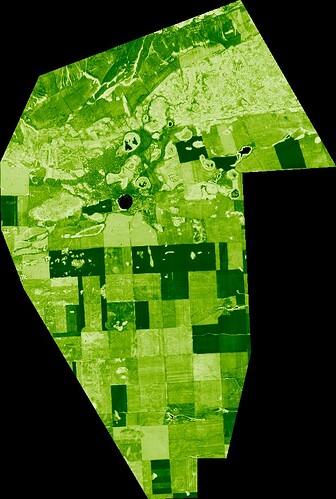Hello Community,
I am using Statistical API to get Mean NDVI of 16D aggregates over a period from 2018-01-01 to 2024-01-01, however I have 17 rows of missing data. I thought it might be due to too much snow, or clouds during certain months, but there is missing ndvi statistics for random months accross the years over a relatively large period of aggregation.
My geometry is:
geometry = Geometry(geometry={“type”:“Polygon”,“coordinates”:[[ [63.382482692313204, 54.17818392226579], [63.338577578717974, 54.12093395661344],
[63.34023437545781, 54.077701508906074], [63.36508632654895, 54.039288878379864],
[63.50342885429086, 53.90139241854814], [63.55727474832349, 53.90236855321484],
[63.55727474832349, 53.92822781232164], [63.58958228474151, 53.92822781232164],
[63.61691943094314, 53.997432204973705], [63.606978650505795, 54.115107490724455],
[63.711356845089824, 54.11899189232207], [63.60523321157419, 54.228007835352656],
[63.382482692313204, 54.17818392226579]]]}, crs=CRS.WGS84)
resx: 0.0004
resy: 0.0004
in my code I mask data with snow, water SCL, and CLM to mask cloud pixels
Please help fix the missing data issue, would be greatly appreciated.
